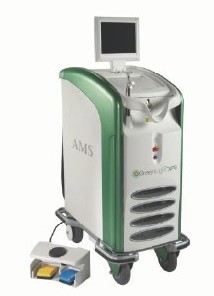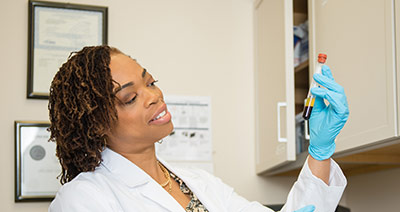Operating Room / Surgical Procedures
Click Here to Watch an On-Demand Webinar on BPH with Dr. Engel
When it is time for a procedure due to patient preference, failure of medical management, or if complications of enlarged prostate or BPH have occurred, it may be necessary to offer a more aggressive procedure that will have to be done in the operating room under anesthesia. All procedures in this class share the main characteristic that here tissue will actually be removed from the middle of the prostate in order to unobstruct the bladder. The best way to explain this is to understand that in the aging male, the prostate can be thought of as a navel orange, with a thick peel surrounding the pulp. It is the pulp that grows as a man ages.
The bladder must empty through the inside of the prostate, the bladder has a hard time emptying as this “pulp” grows and starts to occlude the urine channel. This is why in more severe cases of BPH the bladder simply cannot empty and why it is sometimes necessary to completely “open up the plumbing” to fix the problem.
These procedures only remove the inner overgrown core, not the periphery of the prostate, and they are not to be confused with complete removal of the prostate, or Robotic Prostatectomy, as is necessary in the case of cancer. They also do not carry with them the same risks and post-operative problems that cancer surgery will.
Bipolar TURP
The gold standard procedure in this category is now and has always been called a Trans-Urethral Resection of the Prostate, or TURP. TURPs have been performed for over 50 years. Before medicine for BPH existed, it was for many years, the most commonly performed surgery other than cataract surgery in America. The TURP has become much safer with the advent of bipolar technology, which allows the use of saline rather than water as the irrigant. Using water in the past always created a risk of diluting the blood and lowering key electrolyte concentrations that could lead to significant complications. This tended to limit how long a surgeon had to perform a TURP, and thus the size of the prostate that could be operated on in one sitting. With saline, the operation is far safer, and larger prostates can be treated. A TURP will require:
- Either general or rarely, spinal anesthesia
- Typically, a one-day hospitalization
- A 3-5 day period of catheterization.
It is not particularly painful, and if applied to the right patients should produce at least a 93%-95% success rate. However, a TURP also has a low, but present risk (1% or less) of post-operative incontinence which will have to be surgically fixed, the risk of bleeding or other anatomic complications, and the near certain fact that patients will not have semen when they ejaculate after the procedure. So, even though a TURP is extremely effective and usually very well tolerated, there is also increased risk when compared to office procedures. It is for this reason that the Urologic Surgeons of Washington offer treatments in a stepwise fashion. But, when a more aggressive treatment is called for, a TURP is the treatment of choice.
Robotic Simple Prostatectomy
Occasionally, however, the prostate might be simply too large to perform a TURP efficaciously and safely. Generally, the goal is to perform the procedure that will be the safest and most effective with the least risk that will allow the removal of the inner prostate tissue. As the prostate size approached 100 grams, especially if there are other complication factors such as the presence of bladder stones, what will be offered is a different operation called a Robotic Simple Prostatectomy. Traditionally this has been performed through an incision in the lower abdomen, whereby an incision is made in the bladder that allows the surgeon to tease out the “pulp” of the prostate in one perfect piece, just as one might use their finger to remove the peel of a large navel orange. However, now Dr. Engel will utilize the advantages of robotic surgery to perform this operation. This will allow for a more elegant, less bloody operation and faster recovery. This operation is performed under general anesthesia, and will also require a one-night hospital stay and a 3-5 day catheterization. It will have an identical risk profile to the bipolar TURP.
HOLEP / Holmium Laser Enucleation of the Prostate
Another procedure that is gaining some popularity and is applied by some surgeons for large prostates is called HOLEP, or Holmium laser enucleation of the prostate. This is done under anesthesia, and in the right hands can achieve what a Robotic Simple Prostatectomy achieves without an abdominal operation. However, this operation carries with it a significantly higher risk of bleeding complications, and early reports suggest a potentially higher risk of incontinence and scar formation. It is for these reasons, as well as the fact that Dr. Engel is extremely experienced with robotic procedures, that this is not offered by the Urologic Surgeons of Washington. Dr. Engel has at times referred patients for HOLEP when an abdominal procedure is considered unsafe. Learn more about HOLEP/Holmium Laser here.
Green Light Laser
 Finally, also in the class of procedures that can remove tissue and require anesthesia and thus an operating room are laser procedures. Most heavily marketed, and thus perhaps most popular has historically been the Green Light Laser. However, several other wavelength lasers also achieve the same result including a Holmium laser (HOLAP) and others. With laser procedures other than HOLEP, the inner prostate tissue, or adenoma, is not cut out but rather heated at such a high temperature that the tissue vaporizes. We consider these procedures very similar to the TURP in that the inside of the prostate is opened up. However, with such extreme heat, there are generally far more irritative symptoms and also scarring complications that are usually not seen with TURP. A TURP will remove far more tissue than a laser procedure, with fewer complications, and will typically give more long-term results. Thus, we find that laser procedures are best suited for patients who otherwise would be perfect candidates for office procedures, and we, therefore, see the logic in recommending this less invasive procedure in lieu of more aggressive laser procedures typically.
Finally, also in the class of procedures that can remove tissue and require anesthesia and thus an operating room are laser procedures. Most heavily marketed, and thus perhaps most popular has historically been the Green Light Laser. However, several other wavelength lasers also achieve the same result including a Holmium laser (HOLAP) and others. With laser procedures other than HOLEP, the inner prostate tissue, or adenoma, is not cut out but rather heated at such a high temperature that the tissue vaporizes. We consider these procedures very similar to the TURP in that the inside of the prostate is opened up. However, with such extreme heat, there are generally far more irritative symptoms and also scarring complications that are usually not seen with TURP. A TURP will remove far more tissue than a laser procedure, with fewer complications, and will typically give more long-term results. Thus, we find that laser procedures are best suited for patients who otherwise would be perfect candidates for office procedures, and we, therefore, see the logic in recommending this less invasive procedure in lieu of more aggressive laser procedures typically.
A laser procedure will have an identical risk profile to the TURP as well. One of the reasons for their popularity with some Urologists is the ability to perform these procedures in an outpatient surgery center as an outpatient, but again for the reasons stated above, we feel such a patient is best served typically with a safer, easier office procedure. Learn more about the Green Light Laser.
Aquablation
Aquablation is a minimally invasive and endoscopic BPH treatment, meaning that the entire procedure is performed with a device that accesses the prostate through the urethra. Unlike any other BPH therapy, it uses water jet technology to break up excess prostatic tissue. While it can conceivably be used on any size prostate, its effects are best seen, and the procedure is considered safest with larger prostates – those above 80 grams. Further adding to the excitement around this procedure is that the ablation is performed entirely robotically and autonomously. The urologic surgeon places the device appropriately within the urethra, and the robotically controlled water jets take over. However, there is a very high bleeding risk with this technology, and having to take a patient back to the operating room to stop the bleeding is not uncommon. It is for this reason that Dr. Engel does not offer this modality as Robotic Simple Prostatectomy is far safer in his hands. Learn more about Aquablation.
As usual, we at Urologic Surgeons of Washington partner with our patients. We offer all of the options and present all of the pros and cons of each, deciding together which procedure, which degree of invasiveness, the patient’s willingness to tolerate risk, and which other medical considerations come into play before choosing how best to serve our patient’s urologic needs.





